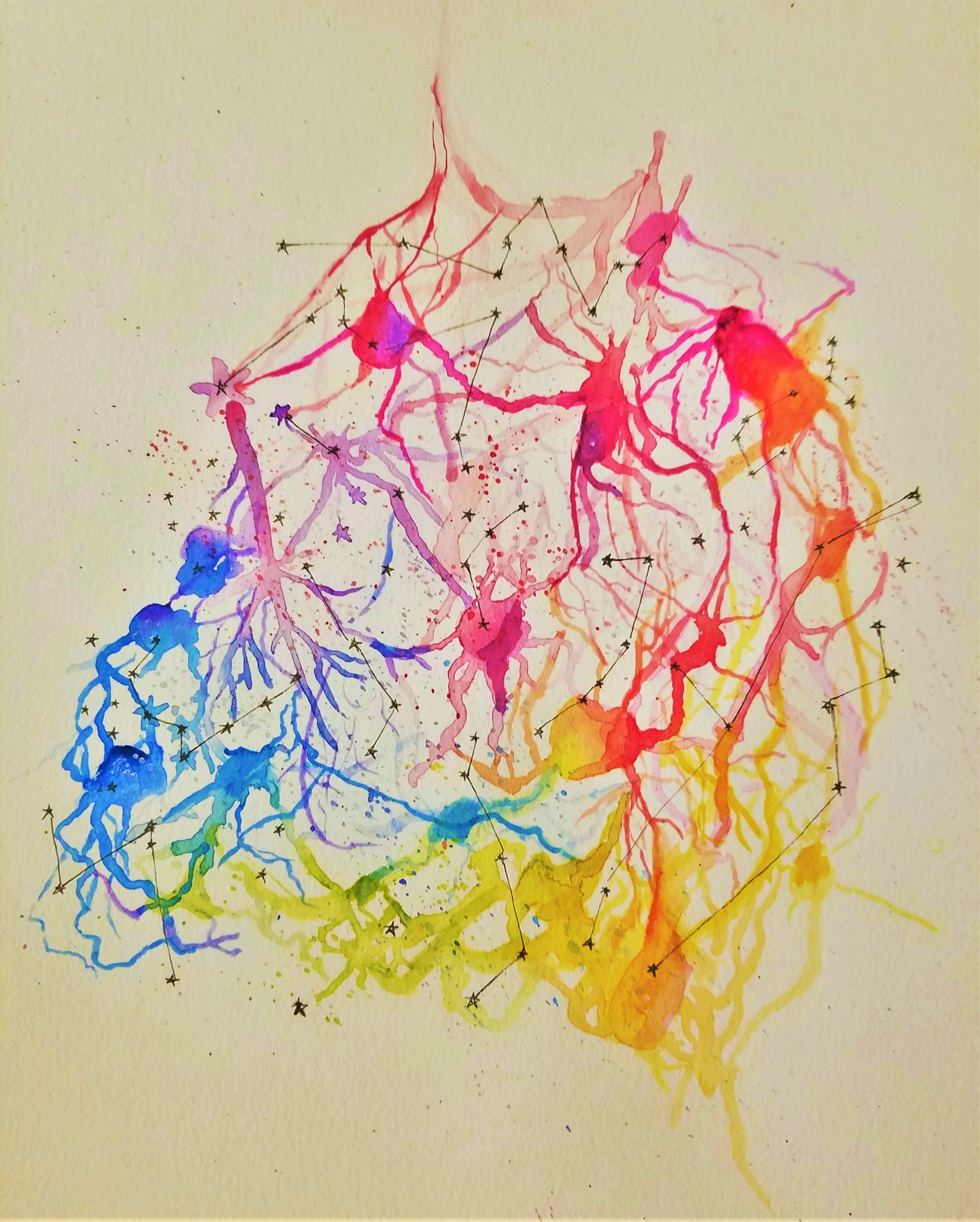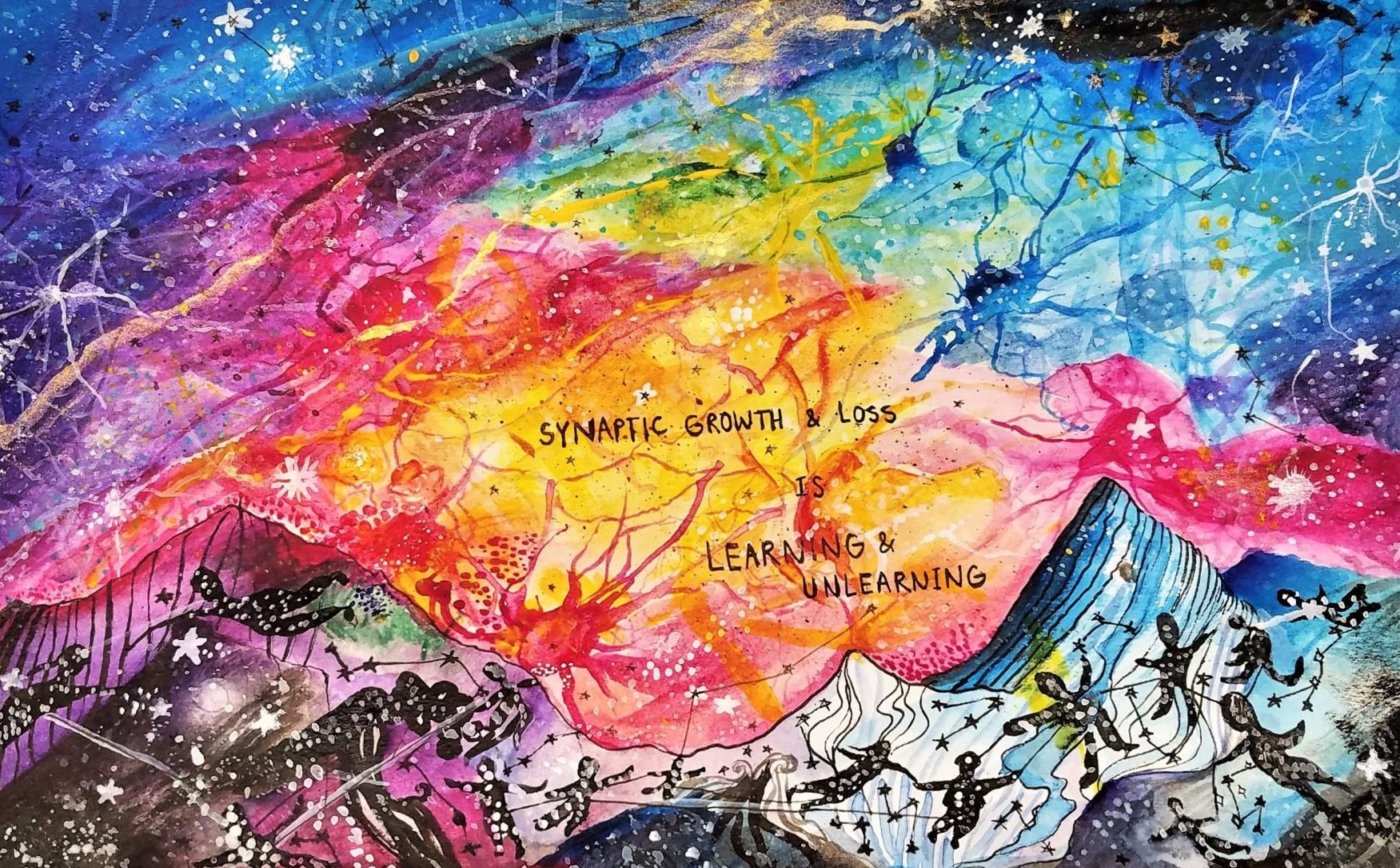A quick Google search for “addiction” gives over 800 million results in less than a second. This vast cyberspace includes hotline numbers, treatment facilities, and heartbreaking statistics. According to the National Survey on Drug Use and Health, 21.5 million Americans over the age of 12 were battling a substance abuse disorder in 2014 [1]. With such a large impact on a variety of people and few universally effective treatments available, addiction has more recently been classified as a disease [2]. However, this is not the final consensus of the medical community. The disease model of addiction emphasizes the disruption of a healthy, functioning brain. It suggests that addiction causes physical changes in the systems regulating reward, self-control, and stress, which qualify as abnormal brain function. Some of the most renowned medical organizations, including the American Medical Society of Addiction (AMSA), American Psychiatric Association (APA), and the National Institute on Drug Abuse (NIDA), support the disease model of addiction [2]. But what exactly qualifies as “proper” brain function? Is it normal for the brain to change? What are the underlying similarities between the neuroscience of addictive behaviors and the incorporation of new habits into our daily routines? An alternative framework of addiction, the developmental-learning model, explores these relations and defines addiction in a new context.
Our brains change with each new experience, meaning we are highly adaptable beings. A fundamental principle of learning includes what neuroscientists call “neuroplasticity” [3]. This buzzword refers to the process by which repetitive actions or thought processes lead to strengthening in synapses, which is then translated into behavioral habits or mindsets. Neurons fire in different patterns whenever we do, think, or experience something. When some neural pathways are activated more than others, it becomes easier and more likely for the neurons to fire enough times to consolidate a behavior. In other words, cells that fire together wire together. The brain’s style of learning is self-perpetuating; once a pathway is strong enough, it can prove very difficult to weaken. We also learn through a feedback loop. Our experiences cause changes in our synaptic configurations, and those changes determine how we will encounter and perceive reality in the future [3][4]. The mechanism behind this strengthening is called long-term potentiation. Recent patterns brought about through behavioral or conscious experience produce a long-lasting change in signaling between neurons. This strengthened connection solidifies neural pathways and consolidates the information stored within these neurons [5]. In other words, the adjustments to our neural networks via our conscious experiences shape the way we interpret future events.
The brain is also known to self-organize while learning. This means that the changes within neural connections build on themselves over time, so new and prospering synapses create the conditions for future learning. Prospering synapses are determined by the reinforcement of consistently firing neural connections. The strongest synapses are labeled as those with the highest average current or voltage produced by the communicating neurons. This measurement is crucial in terms of a neuron’s degree of function because neurons communicate through electrical impulses. In general, a synapse at which presynaptic activity is consistently followed by postsynaptic activity will become stronger [6]. These are the preferred pathways of the brain because they have been habituated. As synapses strengthen through repeated behaviors, the structural changes create a greater probability for those experiences to happen again and again since the brain is more likely to follow this reinforced pathway in terms of increased neural activity. The more repeated an activity is, the more likely the behavior will be carried out in the future because the neural pathways associated with that activity have been strengthened through reiteration; that reinforcement makes it easier and more likely for the behavior to become a habitual manifestation [4]. This is one way addiction can develop.
The developmental-learning model emphasizes that the changes occuring in the addicted brain mirror many of the normal physiological processes of learning. It suggests that we might learn addiction through neuroplasticity, just like we learn everything else. However, when the brain learns addiction, it happens at an accelerated rate because of the intense rewards and emotions at play. The key to the deeper learning of addiction is the role of emotion. Emotions focus our attention through a wash of neurotransmitters, including dopamine [7]. Dopamine functions in abundance in the brain and can contribute to a possible development of addiction. When certain receptors called D1/D5 within synapses are flooded with dopamine, the magnitude of long-term potentiation between these neurons is heavily increased. With an increased long-term potentiation, a higher average voltage between the synapses translates into a stronger synapse. The action of releasing dopamine enhances the formation of new synapses [8]. In terms of the developmental-learning model of addiction, dopamine contributes to the strengthening of intense feelings of reward and the association of reward with the drug of choice. In order to fully understand this model, it is important to ask why people use drugs in the first place. According to the National Institute on Drug Abuse, those reasons include feeling good and increasing productivity. The experiences associated with these reasons produce strong emotions, and the brain is more likely to change as a result [7].

In the early stages of addiction, one part of the brain, called the striatum, goes through massive reconstruction [9]. The striatum is the brain region responsible for pursuing rewards and is a major site for dopamine receptors and synaptic restructuring. A study comparing substance abusers and healthy individuals found greater activity in the striatum of substance abusers than non-users, and a greater likelihood of making risky, but potentially rewarding, choices [9]. As the activity in the striatum increases with drug use, the dorsolateral prefrontal cortex—a region critical for reasoning, remembering, planning, and self-control—loses functional connectivity. With this part of the neural circuit missing, a person will lose the ability to accurately weigh the pros and cons of making certain decisions. Essentially, their motivating factors are off-balance [7]. What does this mean for a person with addiction? The increased activity in the striatum teaches them to give in to instant gratification and pleasure while they simultaneously lose the reasoning skills possibly generated by the dorsolateral prefrontal cortex [10]. Additionally, the uncontrollable desire to use drugs, accompanied by the increased levels of dopamine when exposed to the drug, strengthen synaptic configurations that become increasingly sensitive to the reward cues. As sensitivity increases, addiction becomes more intense, narrowing the perception of what is most rewarding [11].
One of dopamine’s functions in the striatum is highlighting attractive goals and inhibiting awareness of competing goals [7]. Increased dopamine levels in certain synapses associated with the reward of self-administering drugs strengthen the synapses through increased neural electroactivity, resulting in favored behavioral patterns. This escalating sensitivity to reward-related cues leads many individuals down the slippery slope of addiction. After sufficient use, individuals are highly motivated to use drugs. Other rewards such as getting paid, spending time with family, or partaking in a fulfilling hobby cannot compare to the feelings of reward drugs elicit due to the highly activated neural pathways associated with drug use. No matter their stance on the definition of addiction, researchers can agree that an important structural shift in the brain occurs that greatly influences the nature of addictive behavior [12][13]. Drug use transforms from an impulsive act to a compulsive one. This change in behavior is explained by the shift in activation from the ventral striatum to the dorsal striatum. Two key regions of the dorsal striatum influence the type of learning it facilitates: the putamen and caudate nucleus, which are promoters of learning through action-reward associations. The putamen plays a role in stimulus-action coding, and the caudate nucleus is involved in coding reward-prediction errors during goal-directed behavior. These regions instigate the learning of action-reward associations. As the associations become stronger, the behavior of drug use is transformed into an automatic response to a stimuli [14]. Neuroscientists say that automatization of behavior frees up cognitive processes, and as a behavior becomes more and more consolidated, the brain reduces it to an automatic response. Thus, harmful behaviors consolidate just like any other habit [12].
Why is it so important to rethink how we classify addiction? Addiction is complicated and needs to be explained by a model that reflects its complexity. Supplementing the disease model with a different perspective adds nuance and suggests a more comprehensive and holistic treatment methodology. The disease model can reduce individuals to their symptoms. Adding a new perspective like the developmental-learning model moves treatment options in a new direction that allows individuals to mandate their own healing journeys and take first-hand control over their addiction. Looking at addiction through the lens of learning, we know that the strengthening of synaptic connections is crucial to addiction’s rapid development. Therefore, the reduction of these interactions is influential in addiction as well. Synaptic pruning refers to the process by which extra neurons and synaptic configurations are eliminated in order to increase the efficiency of other neuronal transmissions. Another way to describe this concept is with the phrase “cells that fire apart, wire apart.” When synapses experience lower levels of electroactivity, those pathways are weakened along with the associated behavior.
Synaptic pruning offers new treatment methodology for addiction under the developmental-learning model. This idea was studied in an experiment showing reversal of grey matter reduction in the prefrontal cortex of cocaine users who had been abstinent from cocaine for one to 16 weeks. The brain scans of these abstinent individuals were compared to those of cocaine-dependent and healthy control participants. The abstinent and control groups had much lower deficits in prefrontal cortex grey matter compared to the dependent users [15]. This result is significant because it shows that the brain can continue to develop out of addiction and risky behaviors.This restructuring through synaptic growth and loss does not relate to disease, but rather to experience and active decision-making. The brain of an addicted person does not automatically change when a doctor prescribes a care plan; rather, the individual must also make the decision to not use drugs. Future research into treatment methods should focus on new experiences to further growth and brain development, not a return to stability or homeostasis.
Programs like Alcoholics Anonymous or intensive rehabilitation centers do not always work for everyone, as changing one’s brain structure is an internal process, with little room for others to install treatment plans. Perhaps treatment should include an awareness and increase of knowledge about the mechanisms of addiction as defined by the developmental-learning model. Understanding that the brain is a malleable organ may motivate those affected by addiction to focus on the sensations of reward found in things other than drug use. In this light, treatment is seen as further development of the brain.

References
- Center for Behavioral Health Statistics and Quality. (2015). Behavioral health trends in the United States: Results from the 2014 National Survey on Drug Use and Health (HHS Publication No. SMA 15-4927, NSDUH Series H-50).
- Rastegar, Darius A., and Michael I. Fingerhood. “Introduction: Addiction from a Clinical Perspective.” The American Society of Addiction Medicine Handbook of Addiction Medicine , 2015, pp. 1–14., doi:10.1093/med/9780190214647.003.0001.
- Doidge, Norman. 2007. The brain that changes itself. Stories of personal triumph from the frontiers of brain science . London: Penguin.
- Greenough, W.T., J.E. Black, and C.S. Wallace. 1987. Experience and brain development. Child Development 58: 539–559. doi: 10.2307/1130197 .
- Martinez, J. L., Barea-Rodriguez, E. J., & Derrick, B. E. (1998). Long-Term Potentiation, Long-Term Depression, and Learning. Neurobiology of Learning and Memory, 211-246. doi:10.1016/b978-012475655-7/50007-1
- Murthy, V. N. (1998). Synaptic plasticity: Step-wise strengthening. Current Biology,8 (18). doi:10.1016/s0960-9822(07)00414-9
- Lewis, Marc C. “Addiction and the Brain: Development, Not Disease.” Neuroethics , vol. 10, no. 1, 11 Jan. 2017, pp. 7–18.
- Otmakhova, N. A., & Lisman, J. E. (1996). D1/D5 Dopamine Receptor Activation Increases the Magnitude of Early Long-Term Potentiation at CA1 Hippocampal Synapses. The Journal of Neuroscience,16 (23), 7478-7486. doi:10.1523/jneurosci.16-23-07478.1996
- Kennedy, J. G., Labbe, S., & Fecteau, S. (2016). The Involvement of the Striatum in Decision Making. Dialogues in Clinical Neuroscience, 55-63. Retrieved from https://www.ncbi.nlm.nih.gov/pmc/articles/PMC4826771/ .
- Kelley, Ann E., and Kent C. Berridge. “The Neuroscience of Natural Rewards: Relevance to Addictive Drugs.” The Journal of Neuroscience , vol. 22, no. 9, 2002, pp. 3306–3311., doi:10.1523/jneurosci.22-09-03306.2002.
- Marsch, L.A., and W.K. Bickel. 2001. Toward a behavioral economic understanding of drug dependence: delay discounting processes. Addiction . doi: 10.1046/j.1360-0443.2001.961736.x .
- Berridge, Kent. “Neural Mechanisms Underlying the Vulnerability to Develop Compulsive Drug-Seeking Habits and Addiction.” Peer Review of the Biomedical Literature , 2008, doi:10.3410/f.1119807.575900.
- Everitt, Barry J., and Trevor W. Robbins. “From the Ventral to the Dorsal Striatum: Devolving Views of Their Roles in Drug Addiction.” Neuroscience & Biobehavioral Reviews , vol. 37, no. 9, 2013, pp. 1946–1954., doi:10.1016/j.neubiorev.2013.02.010.
- Balleine, B. W., Delgado, M. R., & Hikosaka, O. (2007). The Role of the Dorsal Striatum in Reward and Decision-Making. Journal of Neuroscience,27 (31), 8161-8165. doi:10.1523/jneurosci.1554-07.2007
- Connolly, Colm G., et al. “Dissociated Grey Matter Changes with Prolonged Addiction and Extended Abstinence in Cocaine Users.” PLoS ONE , vol. 8, no. 3, 2013, doi:10.1371/journal.pone.0059645.
